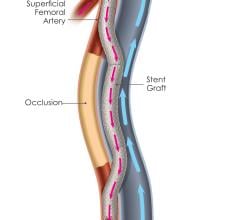Rebecca Hahn, M.D., professor of medicine and director of interventional echocardiography, Columbia University Medical ...
Malissa Wood, M.D., co-director of the Corrigan Women’s Heart Health Program, Massachusetts General Hospital, explains ...
Malissa Wood, M.D., co-director of the Corrigan Women’s Heart Health Program, Massachusetts General Hospital, explains ...
Providing exceptional cardiovascular care for patients to achieve the best possible outcomes is the number one goal for ...
Using catheter-based ablation instead of medications alone reduces the risks of death and stroke in patients with the common heart arrhythmia known as atrial fibrillation (AFib), new research from UC Davis physicians shows.
July 3, 2018 — Cardiac hybrid imaging with computed tomography (CT) and nuclear stress testing is an excellent long-term ...
Michael Lanspa, M.D., director of critical care echocardiography services, Intermountain Medical Center, Salt Lake City ...
Cardiac positron emission tomography (PET) is growing in popularity among cardiologists because it provides the ability ...
HeartFlow Inc. announced that UnitedHealthcare now covers the HeartFlow FFRct Analysis, extending access to their 45 million beneficiaries. With this new coverage, more than 235 million people in the United States now have access to the HeartFlow Analysis.
The PQ Bypass Detour System showed promising 12-month durability for patients with extremely long blockages in the superficial femoral artery (SFA) in new results from the DETOUR I Trial. The data were presented as a late-breaking clinical trial session at the Society for Vascular Surgery (SVS) Vascular Annual Meeting, June 20-23 in Boston, Mass. The trial enrolled lesions longer and more complex than those typically studied in SFA clinical trials, with an average lesion length of 37cm, 100 percent TASC II C/D, 96 percent chronic total occlusions (CTO) and 81 percent with moderate-to-severe calcification.
University of Washington (UW) Medicine cardiologists have developed a tool to predict which heart-failure patients stand to gain most, and least, from an implanted defibrillator.
When performing radiofrequency (RF) ablation to treat cardiac arrhythmia, medical professionals must balance the safety ...

July 2, 2018 — Here is the list of the most popular content on the Diagnostic and Interventional Cardiology (DAIC) ...
Lissa Sugeng, M.D., associate professor of medicine, director of echocardiography and of the Yale Echo Core Lab, Yale ...
This is an example of the a mitral valve with regurgitation imaged with 3-D echocardiography using the Siemens SC2000 ...
Change Healthcare Cardiology Hemodynamics is an integrated hemodynamic monitoring system for monitoring vital signs and ...
Results from the MERCURY PE study showed that low-risk pulmonary embolism (PE) patients treated with Xarelto (rivaroxaban) and discharged early from the emergency department had significantly reduced time in the hospital and a median savings of $2,496 per patient. MERCURY PE results were published in Academic Emergency Medicine.
Investigators at Children's Hospital Los Angeles (CHLA) and the University of Southern California (USC) have demonstrated the feasibility of implanting a micropacemaker system in the pericardial sac surrounding the heart. The development represents a breakthrough that may open up new cardiac pacing options for children and adults.
Embolx Inc. has received 510(k) clearance from the U.S. Food and Drug Administration (FDA) for its next-generation family of Sniper Balloon Occlusion Microcatheters for pressure-directed arterial embolization therapy. Now commercially available in the United States, the next-generation family of Sniper devices offers physicians enhanced performance features to improve access and allow easy navigation through small complex vascular structures.


 July 05, 2018
July 05, 2018















